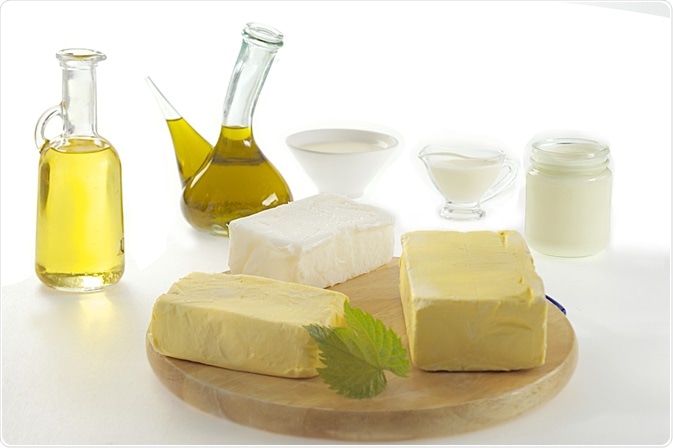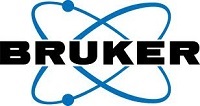
Vegetable oils and fats are a core ingredient in a wide range of foods. Triglycerides, which make up most of the content of vegetable fats, possess several different compositions and structures. The exact nature of the fatty acids which form a triglyceride dictates the resultant product’s physical properties.
Triglycerides tend to crystallize during a process that is affected by the range of triglyceride species present. Because this may define both the appearance and functionality of a product, it is important to understand the processes involved in crystal formation within vegetable fats.
This understanding requires the use of reliable methodologies for studying the crystallization process in fats.
Vegetable fats
Many vegetable oils are polyunsaturated, meaning that they are often used as healthier alternatives for salad dressings and cooking, while also being employed as ingredients in a wide range of food products.
Their use is particularly central to the confectionery industry, because cocoa butter is one of the main ingredients in chocolate. It is cocoa butter that provides chocolate with its primary stability and sensory characteristics, but the exact nature of these characteristics depends on what type of crystallization takes place.1
The importance of fat crystallization
Vegetable fats possess a high triglyceride content, which results in a tendency towards crystallization. Triglycerides are made up of three fatty acids which are arranged on a glycerol molecule.
However, the numerous variations in chain length and degree of saturation of the fatty acids mean that there are extensive possibilities for the nature and combination of the components present in triglycerides.
As the structures and positioning of fatty acids present on the glycerol backbone define the melting point of triglycerides, these also impact upon crystallization behavior.2
Triacylglycerols tend to crystallize into two distinctive polymorphic forms, based on the temperature at which crystallization occurs and the length of time taken to achieve this.3
This change happens in two stages: first, an unstable α‐polymorph forms, and this later develops into a stable β or β′ form. The latter of these polymorphic transformations is irreversible, producing fats with distinct characteristics.
Fats that possess crystals in the β′ form tend to be more sought after in the food industry because of their improved functionality. These β′ form fats are generally softer, enable creaming and support aeration better.
These characteristics are especially important in chocolate manufacturing, where the use of incorrect crystallization forms may result in chocolate that is gritty, mottled, crumbly or that rapidly develops a chalky sheen on its surface.
These unwanted effects can be avoided by tempering the chocolate, which involves repeated heating and cooling to specific temperatures. This process helps eliminate undesirable crystal forms while increasing the created crystals’ density and uniformity of size, in turn improving the final product’s stability.
Focussing on the importance of the fat crystallization process in ensuring product quality has involved research which aims to gain an improved understanding of the complexities related to the crystallization of fats, enabling better control of the variability in the fat’s physical characteristics.
Methods for studying fat crystallization
The technique most widely used for structural analysis of triglyceride crystals is x-ray scattering, and this has been effectively utilized in the identification of the various crystal polymorphs found in cocoa butter.
Studies of fat crystallization kinetics have proven more challenging, however, and time‐domain nuclear magnetic resonance (TD-NMR) approaches at 20 MHz are usually required to accomplish these.
This approach does have some disadvantages, however. Low sensitivity can be an issue in cases where the proportion of crystalline material is especially small (0.5%), and this has the potential to lead to inaccurate determination of crystallization induction times.4 Because of this, differential scanning calorimetry is usually employed in such analyses.
TD-NMR has recently been shown to be sensitive to changes in molecular aggregation at low frequencies, alongside the ability to provide a precise determination of fat crystallization induction times.5
In this study, solid fat content (SFC) measurements of cocoa butter were conducted using TD-NMR at frequencies under 1 MHz. This was done using a Bruker Minispec‐mqone SFC analyzer. Results were then compared with fast field cycling NMR, standard TD-NMR, and small‐angle X‐ray scattering.
The study established that standard TD-NMR is not as sensitive as small‐angle X‐ray scattering during the early stages of crystallization, where far fewer crystals are present. More crucially, it was demonstrated that low-frequency TD-NMR supplied more information than standard TD-NMR on the earlier stages of fats’ crystallization process.
These early changes were easily detected at 10 MHz, using a novel fast field cycling NMR method.
The data acquired in this analysis also prompted the authors to suggest a new model for the structured clusters of molten triglycerides. It is believed that triglycerides assemble in clusters immersed in an isotropic medium of triglycerides, and from this, some molecules begin to interact with the outer fatty acids to form a shell. Because this process is dependent on temperature, it may be prove to be an important stage for deciding the type of crystal which forms.
A novel fast field cycling NMR method and a standard relaxation NMR at very low frequency were able to detect this two‐step crystallization process in cocoa butter, including successful identification of both the early α‐polymorph and the final stable β′‐polymorph.
This recent research highlights the potential for utilizing NMR at low frequencies of less than 1 MHz for analyzing the early crystallization stages of triacylglycerols. This approach has proven to be an alternative, complementary method to small‐angle x‐ray scattering.
References
- Beckett ST. Chocolate manufacture, in Science and Technology of Enrobed and Filled Chocolate, (Ed: G. Talbot), Woodhead Publishing, Confectionery and Bakery Products 2009.
- Maleky F, et al. J Food Sci. 2012;77(3):E74–E79. doi:10.1111/j.1750-3841.2011.02575.x
- Miyagawa Y, et al. J Oleo Sci. 2019;68(1):45–52. doi:10.5650/jos.ess18184
- Martini S, et al. J. Am. Oil Chem. Soc. 2005, 82(5), 313.
- Ladd Parada M. et al. Magn Reson Chem. 2019;57:686–694. https://onlinelibrary.wiley.com/doi/abs/10.1002/mrc.4860
About Bruker BioSpin Group
The Bruker BioSpin Group designs, manufactures, and distributes advanced scientific instruments based on magnetic resonance and preclinical imaging technologies. These include our industry-leading NMR and EPR spectrometers, as well as imaging systems utilizing MRI, PET, SPECT, CT, Optical and MPI modalities. The Group also offers integrated software solutions and automation tools to support digital transformation across research and quality control environments.
Bruker BioSpin’s customers in academic, government, industrial, and pharmaceutical sectors rely on these technologies to gain detailed insights into molecular structure, dynamics, and interactions. Our solutions play a key role in structural biology, drug discovery, disease research, metabolomics, and advanced materials analysis. Recent investments in lab automation, optical imaging, and contract research services further strengthen our ability to support evolving customer needs and enable scientific innovation.
Sponsored Content Policy: News-Medical.net publishes articles and related content that may be derived from sources where we have existing commercial relationships, provided such content adds value to the core editorial ethos of News-Medical.Net which is to educate and inform site visitors interested in medical research, science, medical devices and treatments.